A Broadwell Retrospective Review in 2020: Is eDRAM Still Worth It?
by Dr. Ian Cutress on November 2, 2020 11:00 AM ESTGaming Tests: Red Dead Redemption 2
It’s great to have another Rockstar benchmark in the mix, and the launch of Red Dead Redemption 2 (RDR2) on the PC gives us a chance to do that. Building on the success of the original RDR, the second incarnation came to Steam in December 2019 having been released on consoles first. The PC version takes the open-world cowboy genre into the start of the modern age, with a wide array of impressive graphics and features that are eerily close to reality.
For RDR2, Rockstar kept the same benchmark philosophy as with Grand Theft Auto V, with the benchmark consisting of several cut scenes with different weather and lighting effects, with a final scene focusing on an on-rails environment, only this time with mugging a shop leading to a shootout on horseback before riding over a bridge into the great unknown. Luckily most of the command line options from GTA V are present here, and the game also supports resolution scaling. We have the following tests:
- 384p Minimum, 1440p Minimum, 8K Minimum, 1080p Max
For that 8K setting, I originally thought I had the settings file at 4K and 1.0x scaling, but it was actually set at 2.0x giving that 8K. For the sake of it, I decided to keep the 8K settings.
For our results, we run through each resolution and setting configuration for a minimum of 10 minutes, before averaging and parsing the frame time data.
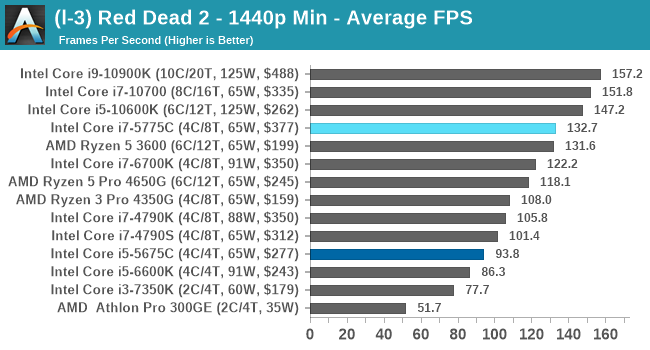
| AnandTech | Low Res Low Qual |
Medium Res Low Qual |
High Res Low Qual |
Medium Res Max Qual |
| Average FPS | 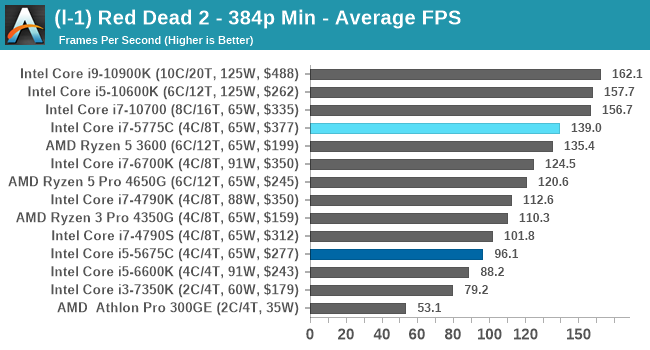 |
 |
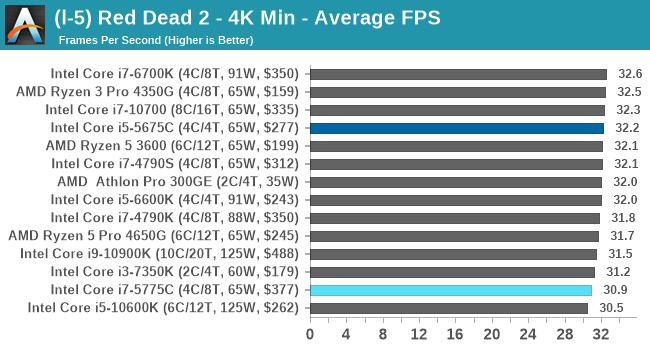 |
 |
| 95th Percentile | 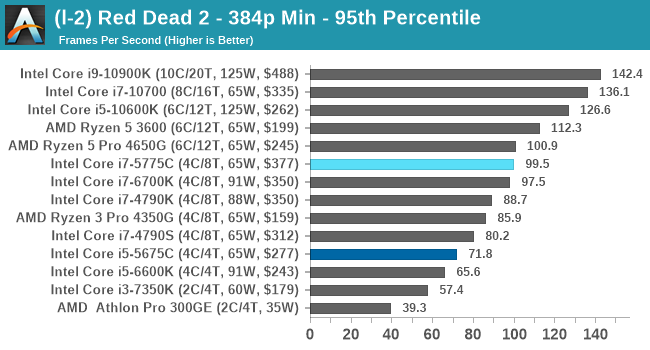 |
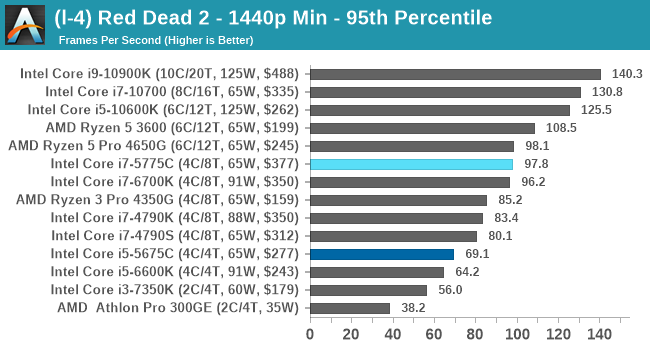 |
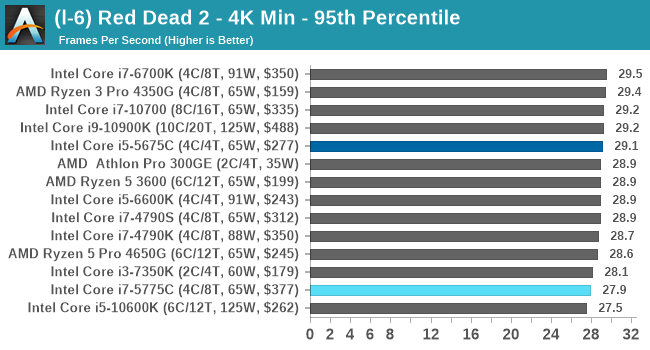 |
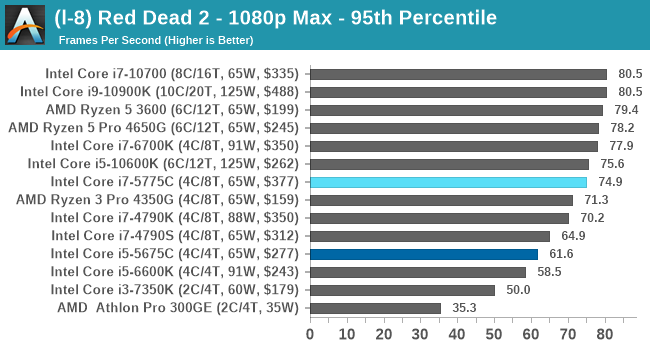 |
All of our benchmark results can also be found in our benchmark engine, Bench.











120 Comments
View All Comments
Leeea - Monday, November 2, 2020 - link
great reviewsadly i7-5775C's are still selling for $100+ on ebay. Not quite worth the upgrade over the i7-4790K, with graphics cards continuing to be by far the largest factor.
But to me it also shows there is no need to jump into the latest and greatest cpu, because these old cpus are still keeping up just fine.
plonk420 - Monday, November 2, 2020 - link
> sadly i7-5775C's are still selling for $100+ on ebayohhhh, that makes me curious as to how they compare to 3100/3300X chips now
Roy2002 - Monday, November 2, 2020 - link
So the conclusion is Optane could play a big role in future?Leeea - Monday, November 2, 2020 - link
no.Optane is slower then normal RAM.
Optane is a faster more limited version of an SSD. Specifically it has RAM like read performance in some areas, while having SSD like write performance in other areas.
Jorgp2 - Monday, November 2, 2020 - link
SSDs are much slower than Optane in writes.The worst case performance for Optane is better than the best performance for an SSD in writes.
FunBunny2 - Monday, November 2, 2020 - link
"The worst case performance for Optane is better than the best performance for an SSD in writes."may haps Optane will optimize when used with code compiled to use only memory-to-memory execution and no hard I/O?
Tomatotech - Monday, November 2, 2020 - link
I would have loved to see Intel embed a couple of gig of Optane on every mobo or in every CPU - at scale it would have been cheap - and we would get the benefits of instant app start, damn fast reboot etc. That would make a bigger difference to the end user experience than 15% on benchmarks. But no, it came out with poorly implemented tiering software, via expensive almost unused add-in cards. Optane had so much mass-market potential, sadly I think it’s screwed now for use outside the datacentre. Intel of all people should know how tiered storage works, why did they screw it up so badly? They even had a shining example in Apple’s Fusion drive to follow (copy) but still messed it up.Jorgp2 - Monday, November 2, 2020 - link
Have you considered asking supermicro for a skylake GT4e review sample?f00f - Monday, November 2, 2020 - link
That's intel's vision of "embedded" DRAM which is only a kind of embedded, because it is on a separate die. If you look for a proper implementation, look at POWER7 processor (2010) with L3 as eDRAM on the same die as cores.jospoortvliet - Wednesday, November 4, 2020 - link
I am a bit surprised amd didn't embed 32 or 64mb memory in the i/o chip... that would probably be relatively easy and affordable.